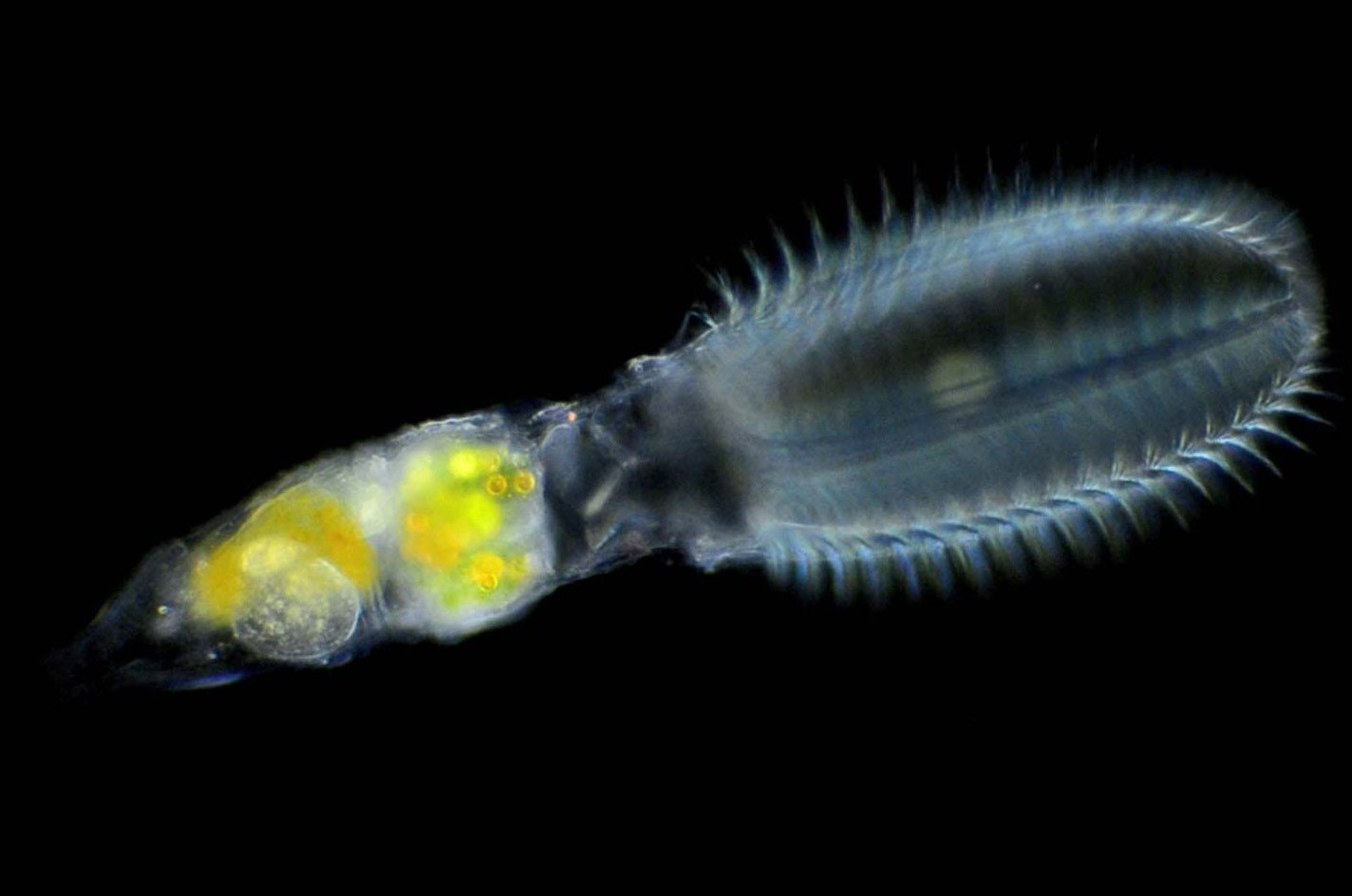Rotifers are a diverse group of micro-animals. Each species looks different, but they all have one thing in common – around their mouth are cogwheel-shaped organs.
Rotifers are a diverse group of micro-animals. Each species looks different, but they all have one thing in common – around their mouth are cogwheel-shaped organs.
Little cogwheels
The bodies of rotifers have two small lobes that, under a light microscope, look like two little cogwheels. The mouth is situated between these two lobes. The little cogwheels have tiny teeth that move rapidly back and forth. This creates a vortex that the rotifer uses to suck up dead organic matter, algae and protozoa.
No two species alike
There are over 2,000 different species of rotifer, such as Stephanoceros fimbriatus which you can see moving around on the homepage . They have a wide variety of body shapes that are perfectly adapted to their various natural habitats. Species that are fixed to the substrate have tiny feet, while swimming rotifers have feather-like organs that they use to “fly” through the water.
Girl power
Like people, rotifers have two sexes – male or female. The females are about 2 mm in size and are visible to the naked eye. The males stop growing when they hatch, and some may be no more than 0.04 mm in length. To put it another way, they are very small. So you need a microscope to see them.
Even though there are two sexes, males are not always needed for reproduction. This is because the females can reproduce asexually. When this happens, the hatchlings are all daughters. In effect, the females are simply cloning themselves. As a result, in some species, the males are so underdeveloped that they have no digestive organs and die shortly after birth.

